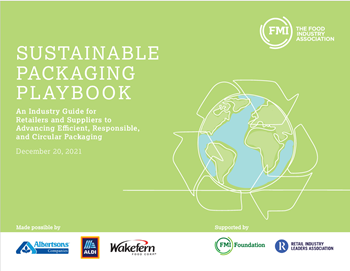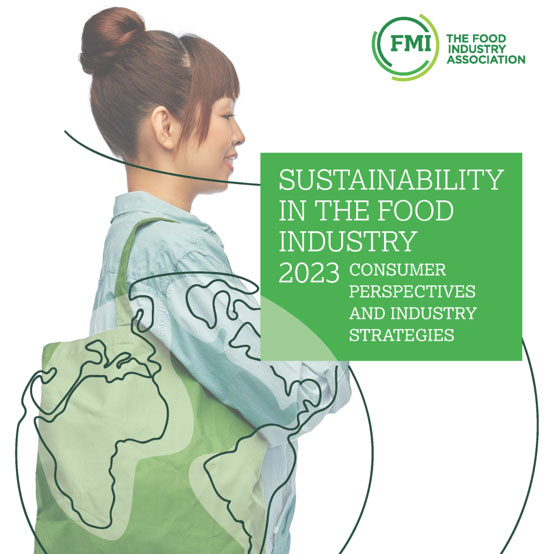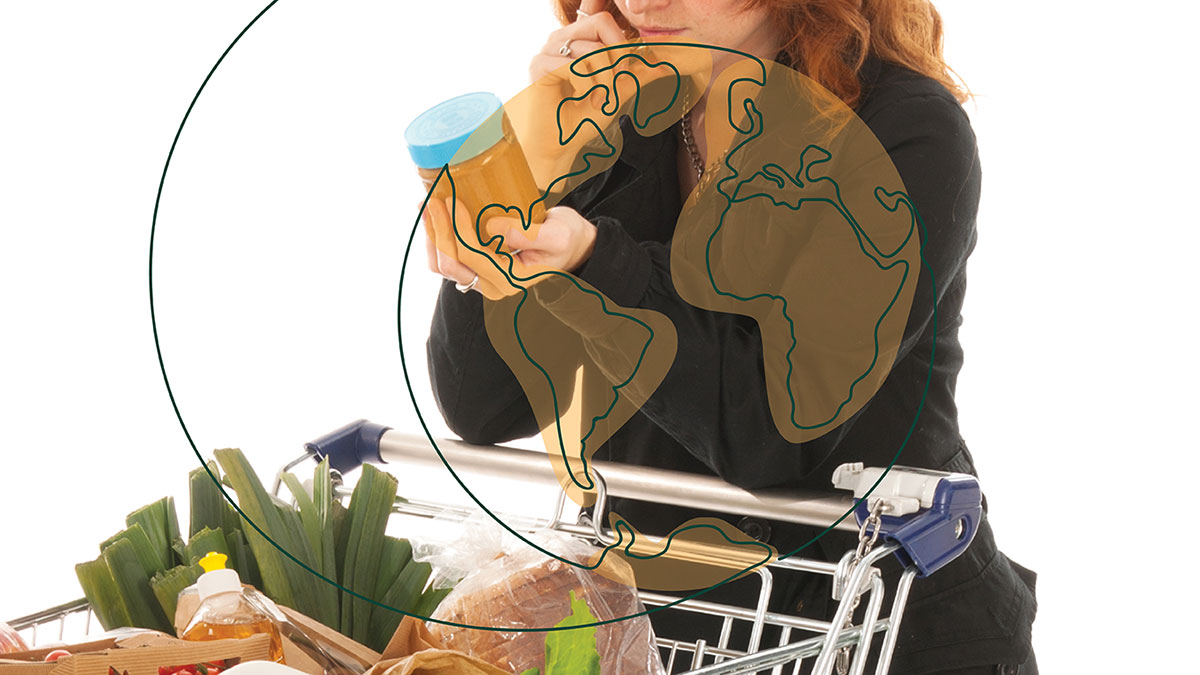By Madalyn Farrar, Manager, Government Relations, FMI

When you think of innovation, what comes to mind? It’s not often we think about the innovation that goes into creating a more efficient design for the packaging that protects the goods and products we buy and use every day. Innovation is happening constantly in the areas of sustainable packaging: from creating more efficient designs to using alternate materials and finding responsible sources of packaging. In a recent blog post, my colleague Andy Harig discussed the importance of sourcing more sustainable packaging to advance the food industry’s sustainability goals and better align with consumer expectations. FMI’s Sustainable Packaging Playbook can help retailers and suppliers re-evaluate packaging within their supply chains and seek sustainable alternatives that have a lower environmental impact.
Efficient packaging is designed to ensure products are protected and delivered in the least amount of material while reducing greenhouse gas emissions. This includes eliminating extra packaging components, reducing fossil fueled-based plastics and sourcing packaging created with renewable energy. To reduce their plastic resin usage in packaging, Albertsons Companies engineered a milk jug that uses around 10% less HDPE plastic than the previous design. Striving toward efficient design is a critical aim of sustainable packaging.
Sustainable packaging also incorporates alternative materials such as fiber, post-consumer recycled (PCR) content and other materials from responsible sources. Beyond the environmental benefits of a sustainably innovative package design, it also will better align with consumer preferences. Shoppers increasingly want to purchase products that have more sustainable packaging, with 73% of consumers saying they seek out products and packaging made from recycled materials. Disclosing the use of recycled content to the customer on the packaging or online and publicly tracking progress with using recycled content is one beneficial step, outlined in the action plans of the Playbook.
Many companies have already begun taking key steps toward sustainable packaging by establishing targets to increase the use of PCR content. Using recycled content reduces the need for new materials, lowering the environmental impacts, but it is also in high demand. Prioritizing recyclability and supporting the recycling of packaging by consumers can work to ensure there is availability of PCR materials. As part of their sustainability goals, The Kroger Co. reports on their long-term packaging commitments and provides publicly accessible information on ways consumers can recycle plastic packaging.
The strategy of business operations is constantly evolving to achieve industry’s sustainable packaging goals and a plan of action can help to reduce environmental impacts, improve growth from innovation and align with consumer expectations. Fortunately, the Sustainable Packaging Playbook is an excellent resource offering a variety of ways to adopt packaging designs that are more sustainable and can be achievable for many companies.


 Industry Topics address your specific area of expertise with resources, reports, events and more.
Industry Topics address your specific area of expertise with resources, reports, events and more.
 Our Research covers consumer behavior and retail operation benchmarks so you can make informed business decisions.
Our Research covers consumer behavior and retail operation benchmarks so you can make informed business decisions.
 Events and Education including online and in-person help you advance your food retail career.
Events and Education including online and in-person help you advance your food retail career.
 Food Safety training, resources and guidance that help you create a company food safety culture.
Food Safety training, resources and guidance that help you create a company food safety culture.
 Government Affairs work — federal and state — on the latest food industry policy, regulatory and legislative issues.
Government Affairs work — federal and state — on the latest food industry policy, regulatory and legislative issues.
 Get Involved. From industry awards to newsletters and committees, these resources help you take advantage of your membership.
Get Involved. From industry awards to newsletters and committees, these resources help you take advantage of your membership.
 Best practices, guidance documents, infographics, signage and more for the food industry on the COVID-19 pandemic.
Best practices, guidance documents, infographics, signage and more for the food industry on the COVID-19 pandemic.
